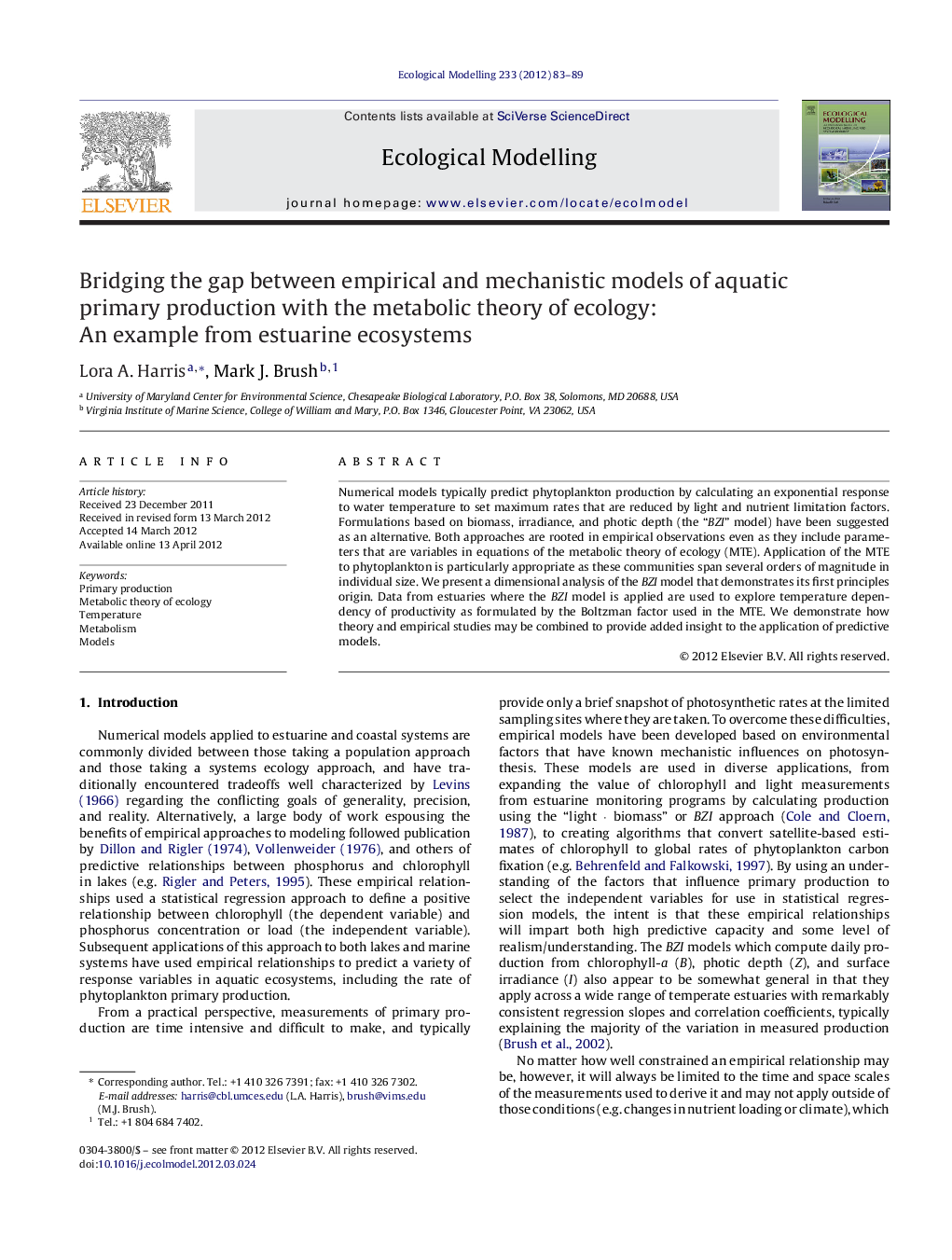| Article ID | Journal | Published Year | Pages | File Type |
|---|---|---|---|---|
| 4376484 | Ecological Modelling | 2012 | 7 Pages |
Numerical models typically predict phytoplankton production by calculating an exponential response to water temperature to set maximum rates that are reduced by light and nutrient limitation factors. Formulations based on biomass, irradiance, and photic depth (the “BZI” model) have been suggested as an alternative. Both approaches are rooted in empirical observations even as they include parameters that are variables in equations of the metabolic theory of ecology (MTE). Application of the MTE to phytoplankton is particularly appropriate as these communities span several orders of magnitude in individual size. We present a dimensional analysis of the BZI model that demonstrates its first principles origin. Data from estuaries where the BZI model is applied are used to explore temperature dependency of productivity as formulated by the Boltzman factor used in the MTE. We demonstrate how theory and empirical studies may be combined to provide added insight to the application of predictive models.
► We compare an empirical primary production model (BZI) with the metabolic theory of ecology. ► Dimensional analysis shows the equivalency between the empirical and theoretical equations. ► The Van’t Hoff–Arrhenius formulation describing temperature dependency is added to the BZI model. ► We estimate a value of 0.32 eV for activation energies from a dataset including 14 estuaries. ► The estimated 0.32 eV value is the same as that predicted by the metabolic theory of ecology.
